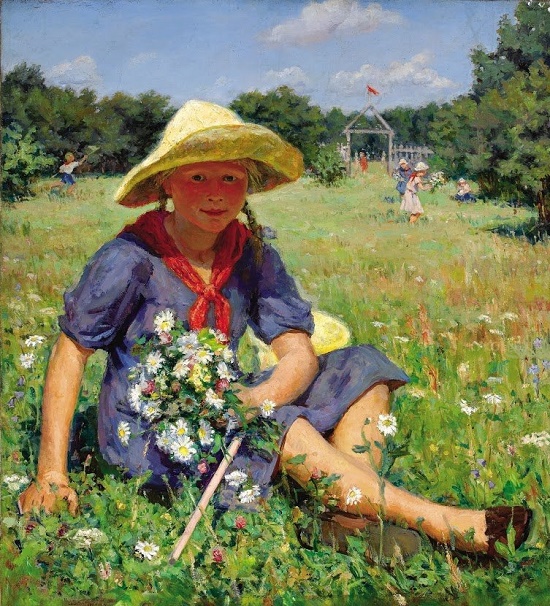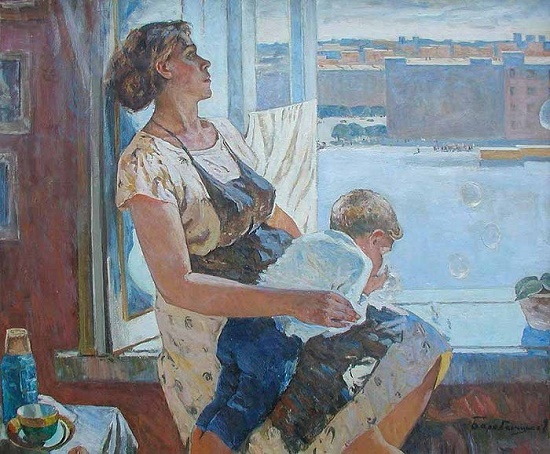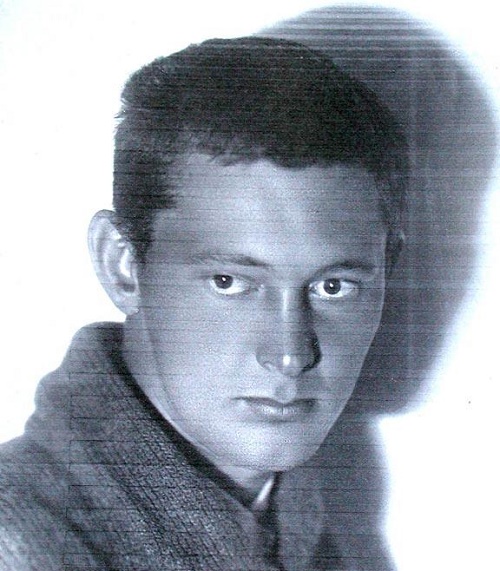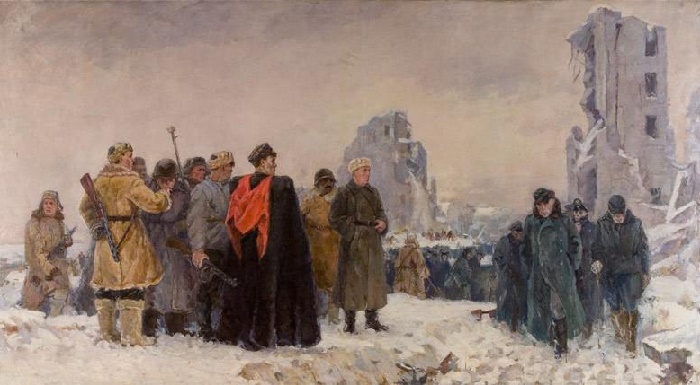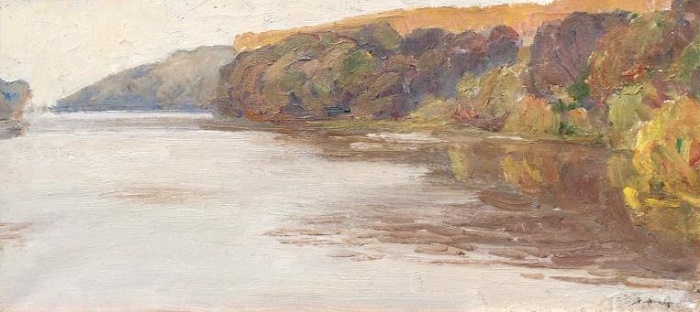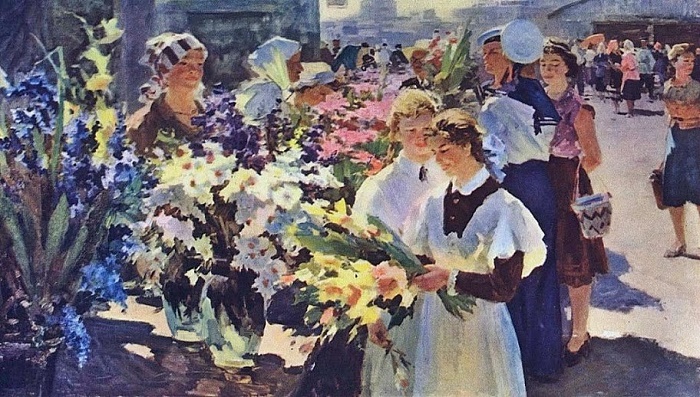Soviet artist Gleb Ivanovich Barabanshchikov 1910-1987
Soviet artist Gleb Ivanovich Barabanshchikov
Born in the village of Sludka, Perm Gubernia, Gleb Ivanovich Barabanshchikov – from the family of employees. He studied at the Perm Art College (1927-1930), then served in the Red Army. Learning the world, he traveled half the country, and meanwhile, changed many professions – timber cutter, cattle breeder, loader in the Leningrad port, and a teacher at school. In 1937, withstood a large competition he became a student of the Institute of Painting, Sculpture and Architecture of the All-Russian Academy of Arts. Unfortunately, the war interrupted the study. Barabanshchikov participated in the heroic defense of Leningrad, awarded a medal for the defense of Leningrad. After wounding lived in besieged Leningrad, and finished his studies at the painting faculty of the Institute of Painting, Sculpture and Architecture of I.E. Repin (1944-1946). As the best student, he received a Stalin scholarship. His mentor was the famous Soviet artist A.A. Osmyorkin, and the diploma painting – “Stalingrad.”
Member of the Union of Artists of the USSR (1946), he combined creative work with teaching in the art school of the Academy of Arts. One of his paintings devoted to the feat of the seaman-paratrooper NA Vilkov, who repeated Alexander Matrosov’s feat on the Kuril island during the war with Japan.
At the invitation of the Kursk branch of the Union of Artists, in 1952 he came to Kursk for a permanent job – chairman of the board of the Kursk branch of the art fund of the RSFSR. Also, he was the Chairman of the Board of the Kursk Branch of the Union of Soviet Artists.
Being in constant creative search in painting, he managed to say his word not only in the thematic genre, but also in the landscape, still life, and portrait. In the landscape we see the naturalness of the composition and the unusual unity of color. A simple motif turns into a poetic narrative.
Soviet artist Gleb Ivanovich Barabanshchikov
However, he gave preference to the plot picture, in which it is possible to express the whole imaginative structure of thoughts and feelings, and to raise a considerable layer of life. In this genre, for example, he created “Books”, dioramas “Kursk mines” and “Streletskaya steppe” and many other canvases. The young people’s striving for knowledge of the world around them – shown in the famous painting “Youth” (1953). In addition, he created monumental works, such as “For the First Subbotniks” (1969), “Fates” (1967), “Memory” (1974), etc.
Barabanshchikov was a participant of many zonal, republican and all-union art exhibitions. Personal exhibitions took place in 1970 and in the 1980s in Kursk. Honored Artist of the RSFSR (1972).
The artist died on June 29, 1987 in Kursk.
